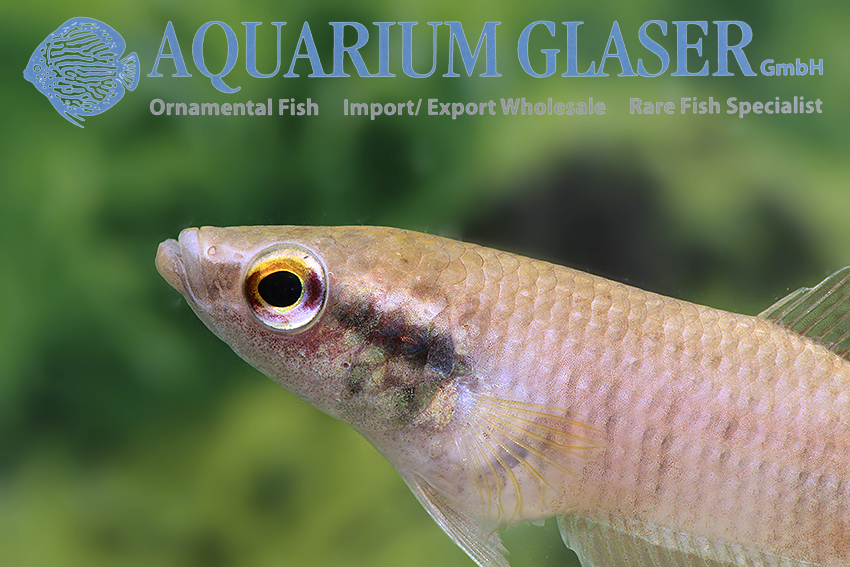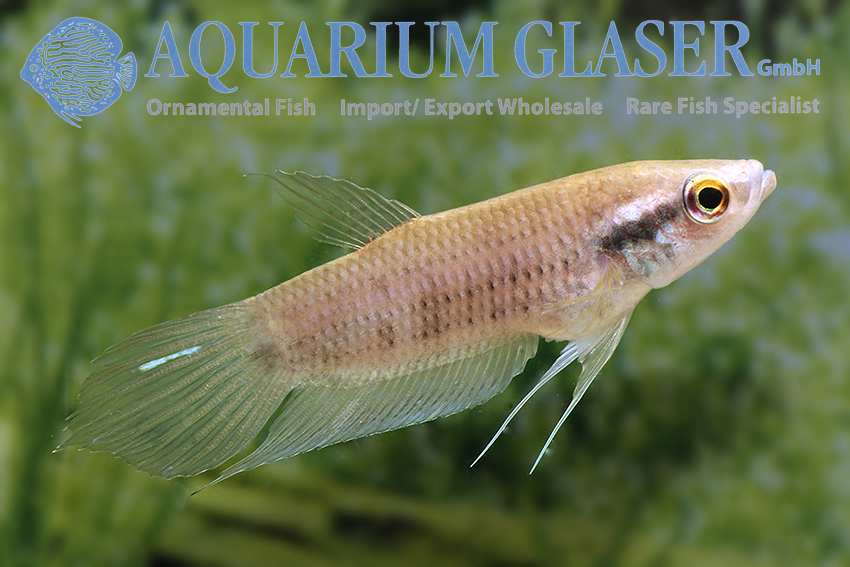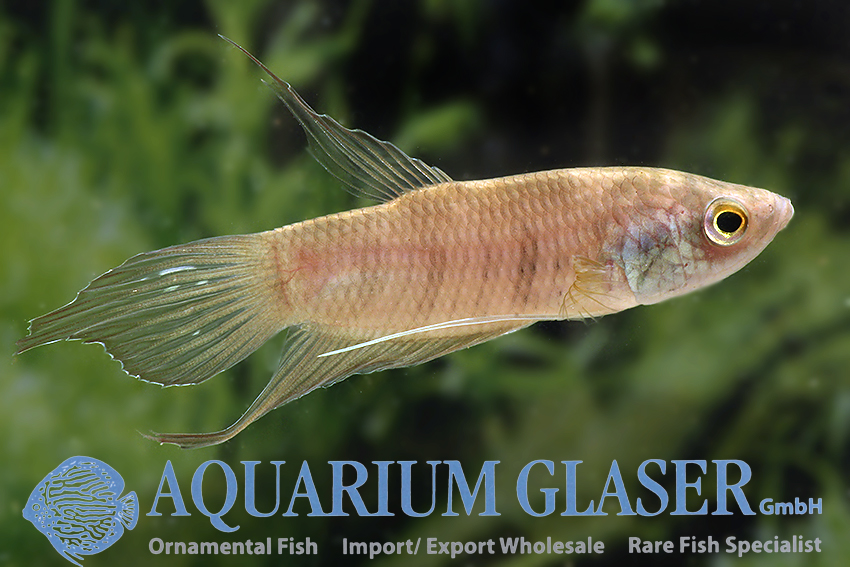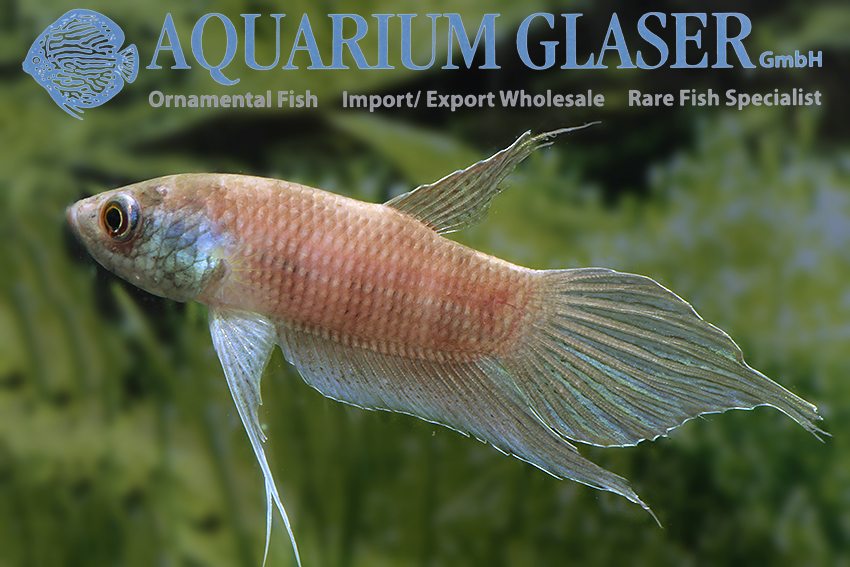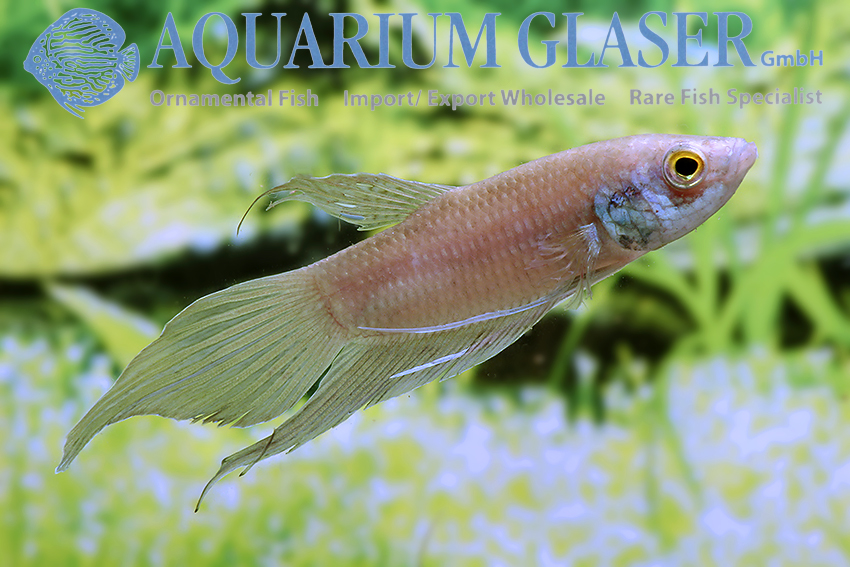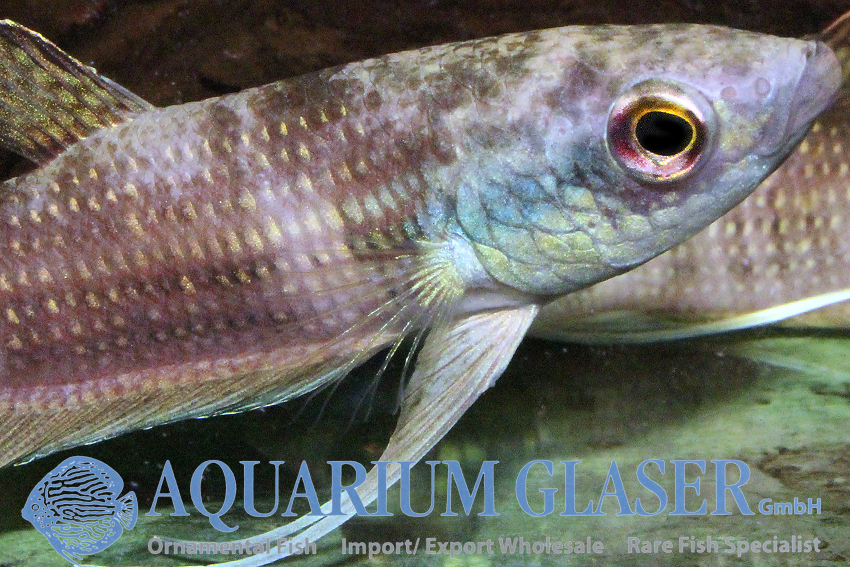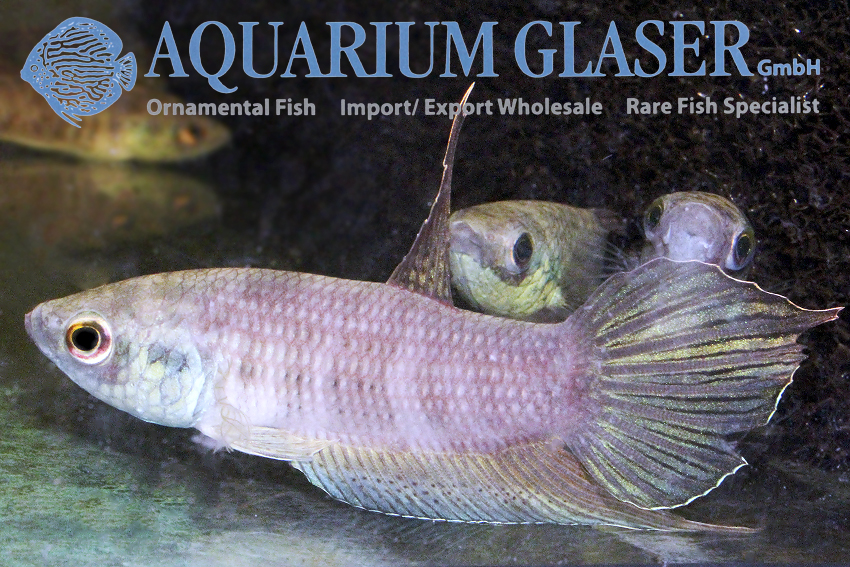With 73 species generally regarded as valid, the genus Betta has become rather confusing and without knowledge of the origin, even specialists find it difficult to identify the species. We have just received very beautiful mouth-breeding Bettas from Sumatra, including Betta raja.
Betta raja belongs to the closer relatives of Betta pugnax. The most reliable identification feature are the extremely long ventral fins of the males, which almost reach the caudal fin when put on. The pelvic fins are also the best distinguishing feature of the sexes, because those of the females are usually much shorter than those of the males. Additionally the males have a blue-green face mask and a wonderfully long caudal fin.
So far Betta raja, which by the way was only scientifically described in 2005, has been confirmed on Sumatra by the following sites: Lowland swamp forests of the Batang Hari Basin in Jambi, the northern part of Sumatra Selatan, the Indragiri Basin in Riau and the eastern part of Sumatra Barat in Sijunjung. Before the scientific description of the species, it was often confused with the species Betta schalleri, which was already described in 1994. Betta schalleri looks extremely similar, but only occurs on the relatively small island of Bangka off the coast of Sumatra.
With a body length of 6-7 cm (without fins) Betta raja belongs to the medium sized Betta species. They are peaceful, somewhat shy animals that are best kept in company with conspecifics and other calm and peaceful fish. They go down in rough company. Betta raja are undemanding in terms of water values, except for breeding. Then you should offer soft and slightly acidic water to the mouth breeders in the male sex. The care temperature should be 24-26°C, for breeding 2-3°C warmer.
For our customers: the animals have code 387564 on our stocklist. Please note that we only supply the wholesale trade.
Text & photos: Frank Schäfer





